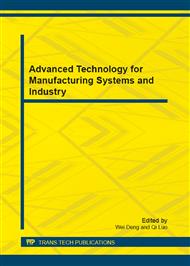p.515
p.521
p.526
p.530
p.536
p.543
p.550
p.556
p.563
Test and Finite Element Simulation of Steady-State Temperature Field of Rolling Tire
Abstract:
To analyze the steady-state temperature field, a three-factor orthogonal test was taken to study comprehensively how the load, speed and tire pressure can influence the tire temperature. The finite element simulation was carried out according to the uncoupled idea. Based on the single-factor analysis towards the speed factor, the actual convection coefficient of different boundaries was determined to calculate the steady-state temperature field at last. These analyses indicate that the tire temperature rise increase with the factor of load and speed, decrease with the increase of the initial tire pressure. The load has the biggest influence on the tire temperature rise, while the speed has the least. With the combination of steady-state temperature field and heat generation rate distribution, all these high-temperature regions can be explained clearly from the finite element perspective.
Info:
Periodical:
Pages:
536-542
Citation:
Online since:
November 2012
Authors:
Keywords:
Price:
Сopyright:
© 2012 Trans Tech Publications Ltd. All Rights Reserved
Share:
Citation:


